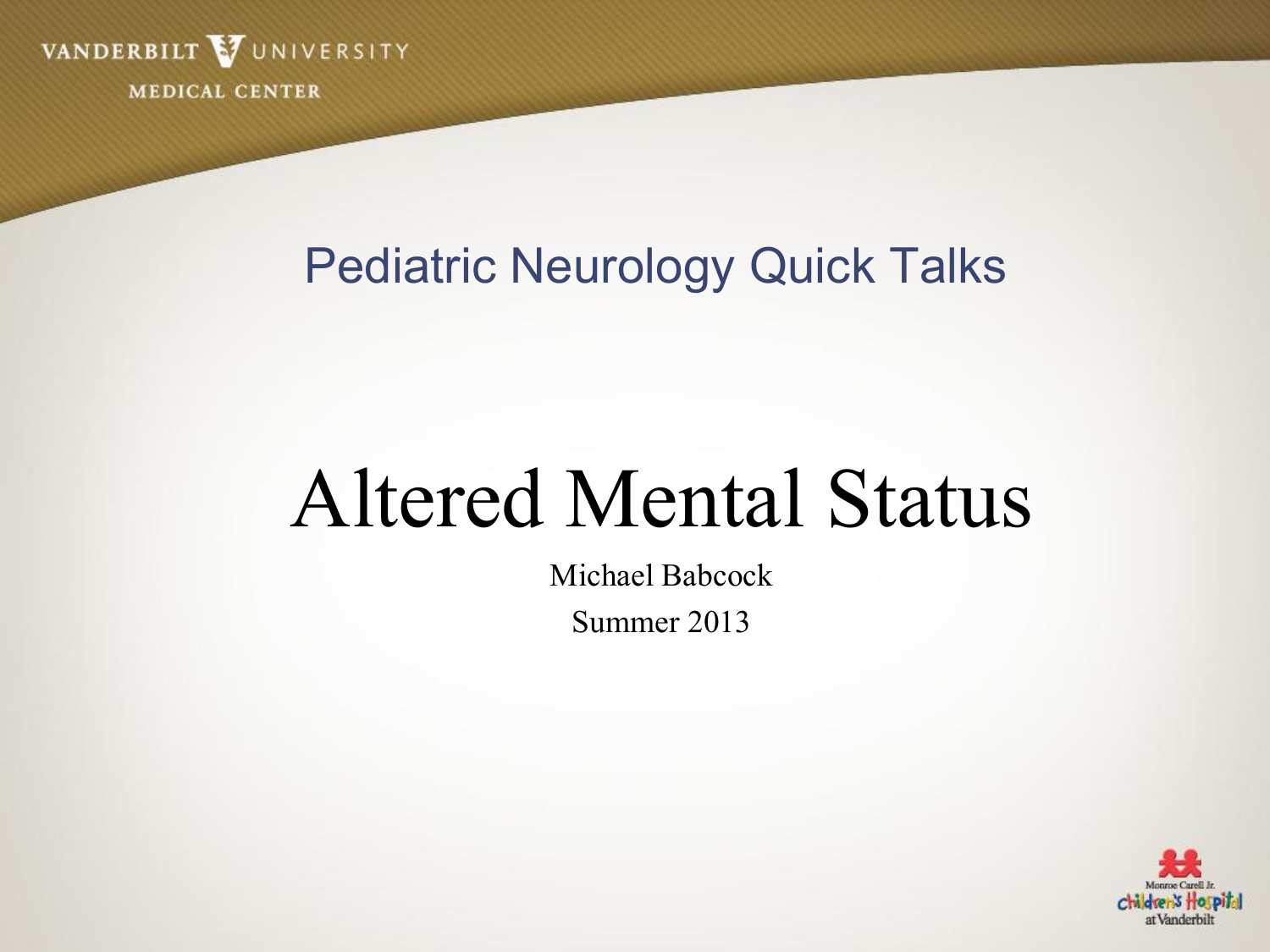
In the elderly, nearly 10% to 25% of hospitalized patients will have delirium at the time of admission. The elderly most commonly will present with altered mental status due to stroke, infection, drug-drug interactions, or alterations in the living environment. Young adults most often present with altered mental status secondary to toxic ingestion or trauma. In infants and children, the most common causes of altered mental status include infection, trauma, metabolic changes, and toxic ingestion. Please see the table for further classification of differential diagnoses. Etiologyĭifferential diagnosis is vast, but can typically be sorted into the following categories: primary intracranial disease, a systemic disease affecting the central nervous system (CNS), exogenous toxins, and drug withdrawal. Ĭoma is a complete dysfunction of the arousal system, in which patients do not respond to basic stimuli but often retain brain stem reflexes. Vascular dementia is similar to Alzheimer disease, although patients may have signs of motor abnormalities in addition to cognitive changes, and may exhibit a fluctuating step-wise decline, as multiple vascular events have an additive effect on the patient’s function. As the disease progresses, patients exhibit decreased performance in social situations, the inability to self-care, and changes in personality. Idiopathic dementia is defined by the slow impairment of recent memory and orientation with remote memories and motor and speech abilities preserved. There are multiple types of dementia, but the most common are idiopathic (also referred to as Alzheimer disease) and vascular dementia. ĭementia is a slow, progressive loss of mental capacity, leading to deterioration of cognitive abilities and behavior. Patients rarely have a rapid fluctuation of symptoms and are usually oriented and able to follow commands. ĭepression is characterized by personal withdrawal, slowed speech, or poor results of a cognitive test. A nearly pathognomonic characteristic of delirium is sleep-wake cycle disruption, which leads to “sundowning,” a phenomenon in which delirium becomes worse or more persistent at night. Some patients may experience rapid fluctuations between hypoactive and hyperactive states, that may be interjected with periods of intermittent lucidity. ĭelirium is typically an acute confusional state, defined by impairment of attention or cognition that usually develops over hours to days. Ĭhanges in mental status can be described as delirium (acute change in arousal and content), depression (chronic change in arousal), dementia (chronic change in arousal and content), and coma (dysfunction of arousal and content). Arousal includes wakefulness and/or alertness and can be described as hypoactivity or hyperactivity, while changes in the content of consciousness can lead to changes in self-awareness, expression, language, and emotions. Changes in consciousness can be categorized into changes of arousal, the content of consciousness, or a combination of both. The evaluation and management of altered mental status are broad and require careful history and physical examination to eliminate life-threatening situations.

Explain when the assessment of the Glasgow coma score should be done in conjunction with a mental status exam.Outline the differential diagnosis for altered mental status in different age groups.

Summarized the importance of history taking and physical exam in the formation of a differential diagnosis.This activity outlines the approach toward differential diagnosis, evaluation, and treatment plans for patients presenting with altered mental status. Underlying etiology can be as subtle as a urinary tract infection and as life-threatening as an embolic or hemorrhagic stroke. The differential diagnosis is broad, and health care providers should be aware of this breadth. It is important to recognize the early signs of altered mental status, identify the underlying cause, and to provide the appropriate care to reduce patient morbidity and mortality. Altered mental status is a common presentation.


 0 kommentar(er)
0 kommentar(er)
